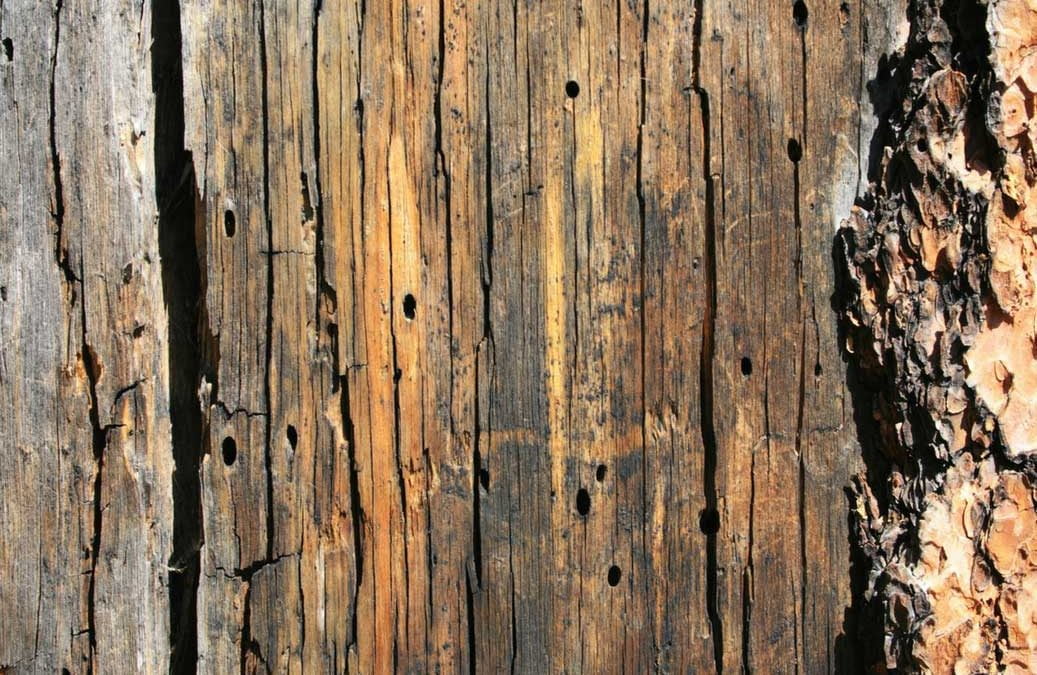There are many different reasons a tree can become sick – age, pests, disease, fungus and construction work to name a few. It’s important to be aware of the signs of a sick tree, as trees that are unhealthy can become dangerous to your family, home and property. It’s often tricky to know if a tree is sick just by looking at it, and different types of trees will show different symptoms. However, there are some general things you can spot yourself that could save a sick tree from dying if caught early.
Here are 7 of the most common signs to look out for:
1. Changes to the tree bark
Changes to the bark of a tree can often be a sign of a bigger problem. If you notice that the tree’s bark has started to fall off the tree, has become brittle, is peeling, crumbling, or has taken on a spongy feel, it may be a sign that the tree is sick.
2. Cracks in the tree trunk
Some trees will have cracks in the trunks that are perfectly normal and not indicative of a problem. However, if you have a tree with significant cracks or splits in its trunk that goes far deeper than the bark level of the tree, it’s advisable to seek professional advice as it could be an indicator of a sick tree or potentially dangerous tree.
3. Reduction in foliage
Trees are normally covered with full, healthy foliage in summer and spring. If your tree isn’t producing leaves at all or even if there is a thinning of leaves in a small section of the tree’s canopy, it could be a sign that the tree is sick or dying. If your tree is dropping leaves more than it normally would or if the canopy isn’t as lush and full as it normally is, these can all be signs of a sick tree.
4. Discoloured leaves
Depending on the tree, leaves will naturally change their colour in accordance with the seasons. However, if you start to see unexplained changes, spots or mottling of the leaves or fronds, it could be a sign of a number of problems. Discoloured leaves can indicate that the tree has a disease, that the tree isn’t receiving enough water, sunlight or nitrogen meaning it doesn’t have enough energy for photosynthesis and the production of leaves.
5. Pests
There are many different pests that can invade a tree and cause it to become sick. Some of the more common pests here in Australia are termites, leaf beetles, wood wasps and borers. One of the most destructive and prolific pests are borers. Borers are a group of beetles that are especially prevalent in hardwood trees. The beetle lays its eggs in the trunk of the tree, and its larvae then feeds off the tree, starving the tree of essential nutrients. Borers can do a great deal of damage, so it’s important to know the signs of an infestation. Typically, you will see round or oval shaped holes appearing in the limbs and trunk of the tree where the borer has infiltrated the tree.
6. Deadwood
It can be perfectly normal for a tree to have deadwood throughout its canopy, and some types of trees will naturally have more deadwood than others. However, deadwood can be a sign that the tree is under stress and potentially sick. This can be caused by a number of different factors: disease, pests, compaction of the surrounding earth, lack of water, lack of oxygen to the root system, root disturbance or simply the age of the tree can all be causes of deadwood appearing on your tree. It’s advisable to seek professional advice to ensure it’s not a sign of a bigger problem.
7. Changes to the soil surrounding the tree
Often the soil surrounding the tree can give you clues as to the tree’s health. If the soil is bone dry, and or cracked, the tree may not be getting enough water. If the soil is waterlogged and compressed, the earth may not be strong enough to hold the tree in position, and the tree may even start to lean slightly.
Building work carried out close to a tree can damage the trees root system and suffocate the tree. Soil disturbance or excavation can significantly damage the root system to the point of destabilising the tree. Raising the soil level around the tree’s trunk and root system can suffocate the root system as tree roots need oxygen. It can often be between two and three years after these alterations have occurred that a decline in the health of the tree becomes noticeable. It’s advisable to seek professional advice before undertaking any of these works.
If a tree on your property is showing any of these symptoms, get in a professional Arborist who can inspect the tree and give you the best advice for its care and or removal.

